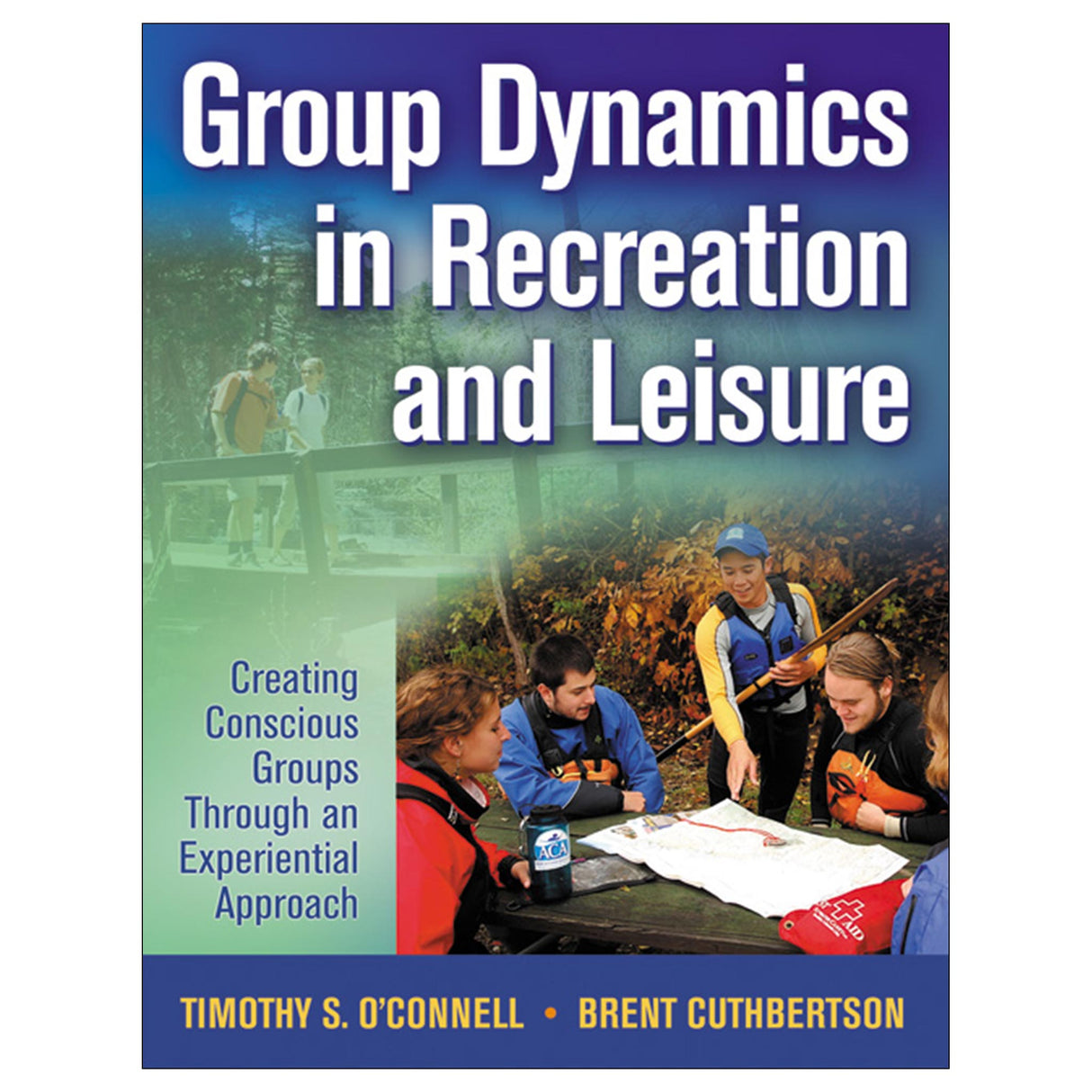Group Dynamics in Recreation and Leisure
Creating Conscious Groups Through an Experiential Approach
$49.00 CAD
People who choose a career in the recreation or leisure fields will spend a large amount of their time in groups. Group Dynamics in Recreation and Leisure: Creating Conscious Groups Through an Experiential Approach builds skills not only in working in group settings but also in creating and facilitating conscious groups. A conscious group is one that recognizes the personal growth of its members as the main group objective. Most people in recreational activities and events are looking to meet people and take part in positive group interaction, providing recreation professionals with a perfect opportunity to develop successful conscious groups.
Group Dynamics in Recreation and Leisure introduces group dynamics theory and current research as it applies to recreation and leisure settings. It presents the key concepts and terms, a brief history of the field, and the various theories and models of group development. The text then explains the concept of the conscious group, describes the nature and components of a conscious group, and applies experiential learning theory to working with these groups.
Group Dynamics in Recreation and Leisure also moves beyond the theory to show students that their understanding of group dynamics can be a meaningful and realistic tool. They'll learn to apply the theory to the practical factors and issues involved in leading and working with conscious groups. They'll explore group goal setting; clarification of objectives and expectations; processes for decision making and problem solving; positive communication; ethics, morals, and values; effective leadership of recreation groups; and the effects of conflict, power, gender, and environment on group functioning.
Students will also find a thorough examination of common issues that arise when working with groups, including potential pitfalls and strategies for dealing with or avoiding those pitfalls. They'll learn about the strengths, weaknesses, and myths of group interaction, including signs of “illness” within groups; working with alternative groups, such as cooperative living groups, as well as involuntary groups and unwilling participants; and capitalizing on diversity and difference. Because those in recreation professions so often work with large groups, crowd dynamics is also discussed. The authors describe how individual and small-group behavior can affect larger groups and also look at mob behavior and riots.
Throughout the book, case studies, scenarios, and examples from leisure services, parks, tourism, and experiential education help students better understand and apply the information. These are some other student-friendly features:
-Toolbox Tips on strategies and techniques for working with groups
-Learning activities that apply the principles discussed in the text
-Web sites for further exploration of the ideas in the text
Group Dynamics in Recreation and Leisure: Creating Conscious Groups Through an Experiential Approach provides a new view of group dynamics with a unique focus on recreation, leisure, and experiential education settings. Through its concentration on skill development to facilitate productive group work, Group Dynamics in Recreation and Leisure renders the topic of group dynamics as meaningful,realistic, and applicable for both students and practitioners.
Audience
Textbook for undergraduate students in group dynamics courses; supplemental text for students enrolled in core courses in recreation,leisure services, parks and tourism programming, leadership, and management. Reference for recreation and leisure professors and professionals.
Part I: Understanding the Conscious Group
Chapter 1: Introduction to Group Dynamics
-Groups in Human History
-Groups Defined
-Classifications of Groups
-Group Dynamics
-Why Study Groups?
-Summary
-References
Chapter 2: Group Formation and Development Theory
-Why People Join Groups
-What Makes Groups Attractive?
-What Happens Next?
-Group Development Theories
-The Group–Individual Relationship
-Summary
-Questions for Discussion
-Recommended Websites
-References
Chapter 3: The Conscious Group
-Group Purpose
-Personal Growth in Recreation Groups
-Experiential Education
-Experiential Education and Group Dynamics
-Summary
Part II: Developing the Conscious Group
Chapter 4: Group Goals, Objectives, and Expectations
-Defining Terms
-Clarifying Goals, Objectives, and Expectations
-Summary
Chapter 5: Values, Ethics, and Morals
-Definitions
-Moral Development
-Applying Moral Theory
-Moral Reasoning Exercises
-Summary
Chapter 6: Decision Making and Problem Solving
-Advantages of Group Decision Making
-Disadvantages of Group Decision Making
-A Six-Step Process for Making Decisions
-Common Methods of Group Decision Making
-The Leader and Decision Making
-Summary
-References
Chapter 7: Power and Conflict
-Power
-The Operation of Power in Groups
-Managing Conflict
-Summary
Chapter 8: Gender in Group Dynamics
-Gender and Sex
-Gender and Recreation Behavior
-Generalizations About Gender-Specific Behaviors
-Gender and Leadership
-Conformity
-Decision Making
-Communication
-Conflict Management
-Power
-Status
-Task Solutions
-Summary
-References
Chapter 9: Group Leadership
-What Is Leadership?
-Followership
-Leadership Theory
-Applying Leadership Theory
-Summary
-References
Chapter 10: Environmental Impacts on Groups
-Environmental Factors
-Social Environment
-Case Study
-Summary
-References
Part III: Addressing Issues in the Conscious Group
Chapter 11: Strengths, Weaknesses and Myths in Group Dynamics
-Strengths of Groups
-Weaknesses of Groups
-When to Work Alone
-Myths in Group Dynamics
-Practical Techniques for Addressing Group Needs
-Summary
-References
Chapter 12: Crowds and the Mob Mentality
-Collectives
-Behavior in Crowds
-Strategies for Working With Collectives
-Summary
Chapter 13: Alternative Groups
-Consensus-Based Groups
-Participant-Centered Groups
-Working With Alternative Recreation Groups
-Summary
Chapter 14: Diversity and Difference
-Diversity and Difference
-Types of Diversity
-Benefits of Diverse Groups
-Shortcomings of Diverse Groups
-Working With Diverse Groups
-Summary
-References





